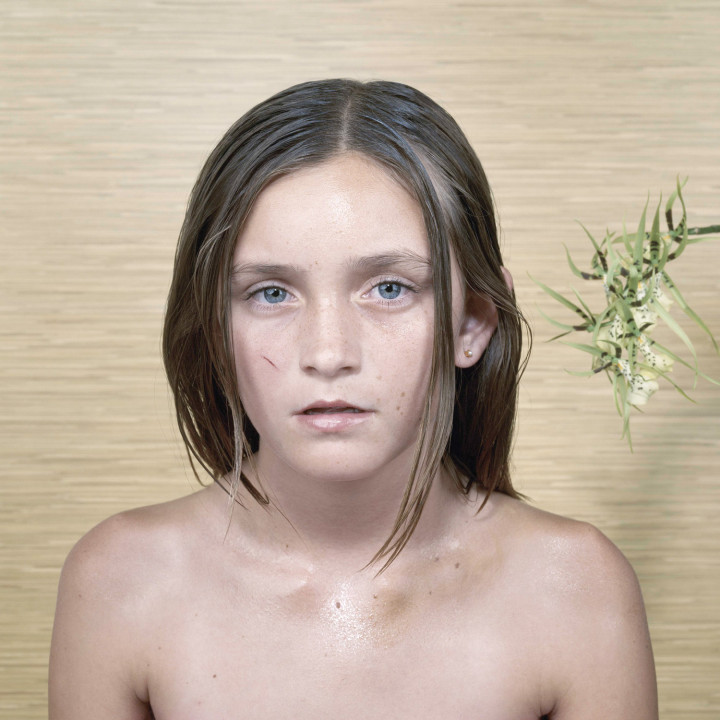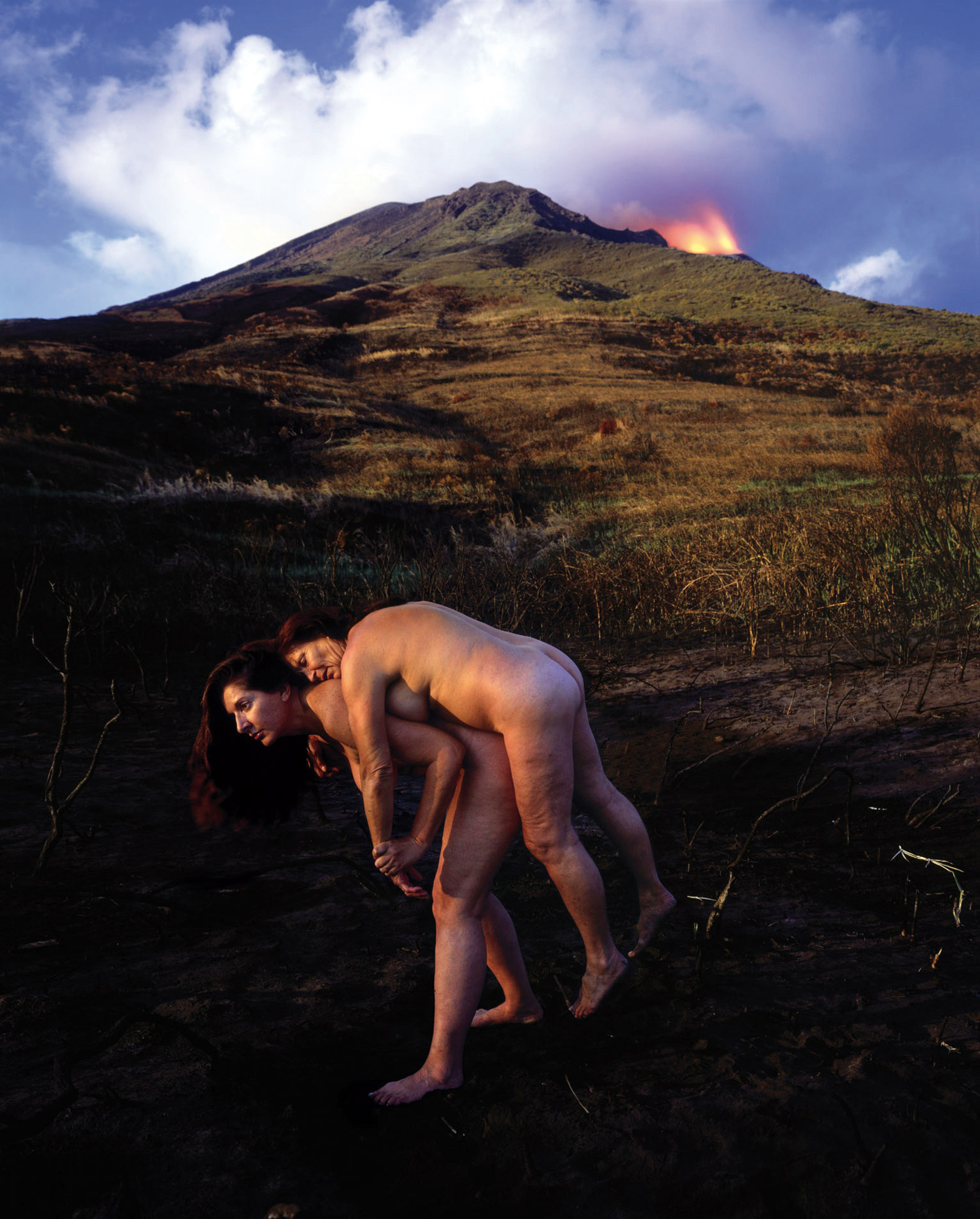
What is a character? It is, first of all, a letter, and secondly, an aggregate of letters, a representation of an individual being composed of words and language. When the character takes shape instead as an image, in paint on canvas, or else as a simple sketch, a cartoon, it is generally in opposition to the notion of the ideal-type. In this context, the character retains an essential connection to literature while simultaneously announcing its distance from the timeless realm of ideas: it is a specific narrative instance drawn from the everyday life of the people. Nothing could be more natural, authentic, self-evident: the image of the character is literally “true to life.” But to Frankenstein’s monster, it is a whole other story.
To this precursor of the post-human who initially wants nothing more than to be a “true to life” character, it will become quickly evident just how unrealistic realism can be. From the start, the monster is considered repulsive and rejected by Dr. Henry Frankenstein because it does not resemble him. Not only is it comprised of desecrated corpses, but its parts range from “common” to sub-standard. A misbegotten montage of life and death, as well as utterly incompatible class interests, it is reduced to the base-line condition of merely surviving from one day to the next, and yet also given to introspection and such “higher” philosophical pursuits. That it should fall short on all counts is of course the point. The monster, as both a formal and conceptual mess, constitutes a satirical indictment of realism in art, but without necessarily supporting its symbolist opposition. It makes perfect sense that, in the original James Whale film version, it is hunted down by the same “rabble” from which it had emerged. In the destruction of the doctor’s creation, this angry mob reclaims ownership of what was always theirs, while at the same time “sending a message” to any future aristocratic meddlers in their affairs. And the monster, despite its mundane aspirations, must face a supremely, perhaps even excessively, allegorical end: crucified on the crossbars of a windmill that turns like a spool of film.
It is only much later, in the world of comic books that the monster’s physical being will be recognized as something more than a category mistake. Reflecting back on a political legacy of mutant rights activism that stretches from the Justice League of America to the X-Men, the monster will be joined with others of like kind to form a new constituency of once sub-human, now super-human, beings. In the process, it will at last be freed from its troubled class origins, the unhappy consciousness of its maker and the sinister architecture that shapes it. The allegorical dead-ends of both literature and cinema are finally broken through. After all, the monster was built to walk through walls; with sledge-hammer shoes, there is no fortress of solitude that can contain it. By leaning on its friends, it will learn how to move swiftly toward that end that once seemed so impossibly remote: “To become an actor in the busy scene where so many admirable qualities (are) called forth and displayed.”1 To become a character, but no longer the everyday kind.
Comic book narratives of this sort, once limited to a marginal audience of fans and buffs, have attained near-ubiquitous status in contemporary culture. Recent fare like Buffy the Vampire Slayer and Angel, The Crow, The League of Extraordinary Gentlemen, Van Helsing and Resident Evil, among countless other examples, is consistently predicated on characters that have accomplished this same transition between the genres of gothic horror and science-fiction. Basically these are monsters turned super-hero, and whether they appear in feature films, television shows, cartoons or video games does not alter what they essentially are; rather, cross-mediation only makes them stronger. The monster’s original lack of unity as a pieced-together thing becomes its strongest asset in a pieced-together world.

In a closely related manner, some of the most visible members of the contemporary LA art scene resume all the gothic fixations of the prior Helter Skelter generation (after Paul Schimmel’s 1992 exhibition at MoCA, “Helter Skelter: LA Art in the 1990s”), only now these are strained through a cultural matrix that cleanses away every last trace of self-conscious suffering. In his last show at Marc Foxx, for example, Sterling Ruby very deliberately echoed that wantonly mismatched style of montage practiced by Nancy Rubins, Paul McCarthy, Mike Kelley, Jim Shaw, et al, but without carrying over any of its reverberations of historical pessimism. Motifs of trans-gendering served to pervert the ostensible purity of a range of pared-down minimalist objects in the by-now expected manner, but this process could no longer be read in terms of contagion. That Frankensteinian dialectic that pits idealized form against the material limits of the abject body is consistently complicated, in Ruby’s work, by bodies that have become as changeable as our ideas about them. The introduction of “The Other” into the substance of “The Same” neither dilutes nor pollutes; to the contrary, the resulting mutations gain a “leg up” on the rest of us.
One recalls how, in the hands of the Helter Skelter school, the act of cultural citation took on an explicitly monstrous edge. In contrast to the more celebratory modes of postmodern recycling that had come to dominate the mainstream in the ’80s and ’90s, these artists treated their found materials as dead matter, forging from them a kind of zombie-realism that was theorized, at the time, as modernism’s own “return of the repressed.” These analogies apply just as well to Ruby’s work, and also to that of Aaron Curry, whose various cultural references are seemingly pulled from that same stagnant pool: The Basil Wolverton caricatures, the soft-modernist driftwood abstractions, the parade of patently un-cool “top idol” pin-ups. All of it would seem to beg a contemptuous, smirking reception, but what it gets instead is the sort of grudging respect we sometimes show Christina Aguilera, whose image serves as the base for one of Curry’s most heterogeneous constructions. With her simultaneous sartorial nods to punk rock, heavy metal and hip-hop, this performer appears absurd only to those closet purists who believe that popular music has ever had anything to do with authenticity. Here, instead, it is clear that excess and over-determination are the aesthetic rule, and it is as an exotic semiotic mash up that she is selected to be Curry’s muse.
At the extreme of cross-cultural mutation, the validating discourses fall away from anaesthetic form like vestigial tails, and the stylistic cues of past oppositional youth movements come back around radiating teflon indifference. Here, as well, we witness the comic-book mining of historically moribund and degenerate monstrosity — rock as Spenglerian “Decline of the West” — for the lifestyle accoutrements of the fashion-forward hybrid.
Another example: the trench-coat and jack-boot look that dominates Marvel’s African-American vampire series, “Blade,” is at least partly transplanted from bands like Joy Division and Throbbing Gristle, while the monster’s lair, a digitally-enhanced industrial ruin, could double for the old Manchester proto-house nightclub, The Haçienda. Meanwhile, Alan Moore’s Watchmen, like so many of his character conflations of classically futurist comic-book lore with choice elements of occult, underground subculture, actually do wind up on the sort of rave flyers collected by Mario Ybarra Jr., that fill to capacity his installation for the traveling “Uncertain States of America” exhibition. Titled Dance to The Beat of A Different Drum Machine, 2005, this act of Duchampian re-circulation yields an exhaustive archaeology of the ephemeral. As with a subsequent 2006 piece for LACMA, The Belmont Ruins, which looks instead to graffiti as another volatile mix of gothic gravitas and modernist streamlining, this artist keeps us circling within the museum of the future past.
Reading into the structural convolutions of these motley sign systems almost as if they were tea leaves is precisely the mandate of an emerging generation of Latino artists that comes together under the banner of nineties-era identity art to conduct their own rethinking of eighties-era monster-culture. According to art historian Rita Gonzalez, this fusion of seemingly incompatible aesthetic constellations is initially suggested in books, more specifically art catalogs, as “a radical juxtaposition of the consensual politics of “CARA” (ie., Chicano Art: Resistance and Affirmation, an exhibition mounted in 1990 at the UCLA Wight Gallery) and the crypto-political, aesthetically violent material of ‘Helter Skelter’.”2 The results, which Gonzalez describes as “monstrous hybrids culled from a wild-style mixture of urban subculture and the Babel-like noise of clashing immigrant outposts of Los Angeles,” have wide-ranging implications for a steadily expanding group of artists that includes Mario Ybarra Jr., Ruben Ochoa, Eduardo Sarabia and Scoli Acosta, among many others. Operating on the free-trade inter-zones between a once-clearly delimited and homogeneous cultural center and its most obscure and far-flung peripheries, they have all identified miscegenation as the most dynamic way forward.
A textbook instance of this process is given in the Vato Action Figures that Ybarra Jr. produced in 1997, at the very start of his career. In global art-world terms, these might be categorized as “assisted readymades,” but they also answer to a localized demand to somehow customize the representation of “The Same” to suit the self-image of “The Other.” Working with the common hobby-shop tools of the modeling enthusiast, Ybarra Jr. seizes on the impossible task of servicing both the mainstream and its margins as a unique artistic opportunity. His solution is carnivalesque: A character that takes shape at the intersection of the ideal, the everyday and the abject.
Although their reduced scale keeps them tethered to an infantile world, the present-day currency of toys in all walks of life would seem to suggest that these are “transitional objects” in a much larger sense. Originating in the narrative imagination, they are gradually materialized via techniques of sketching, rendering, molding and casting, to finally emerge as quasi-sculptural entities that share our space, our reality. With the introduction of consumer-grade modeling software and rapid-prototyping technology, the resistance of found form gives way: every former given becomes a potential variable. Increasingly, among such committed hobby-shop fantasists as Glenn Kaino and Michelle Lopez, as well as their aesthetic forerunners, Charles Ray and Jennifer Pastor, the patented art-world game of Duchampian table-turning is allowed to spin off in ever more delirious yet hyper-specific tangents. Kaino explains: “I try to ignore master narratives and global histories, and spin new stories out of the interwoven threads of several disparate timelines.”3

The historical give and take between cinema and the comic book reaches a crescendo of sorts in the emergence of the wholly-imagined film, with CGI technology erasing any remaining distinction between the categories of live-action and character animation. However, for the fx technicians, model-makers and “imagineers,” it is all about the process of conversion; more than ever before, all eyes are on that wavering borderline between the imaginary and the real. This also is the space that Charlie White has consistently staked out in a photographic practice that seamlessly merges documentary verité and dramatic artifice. From the early Femalien saga, sci-fi erotica shown jointly in the pages of a men’s magazine and the gallery context, to the vaguely Spielbergian ET/AI perspective of Understanding Joshua, White has always understood the role of the character as an inter-media nexus.
Of particular interest in this parade of monsters is his image of our prehistoric ancestor, Homo Habilis, from the “Everything is American” series. A composite, constructed figure shown against a natural ground, this slight homunculus could have wandered over from the opening segment of Stanley Kubrik’s 2001: A Space Odyssey to remind us of our own monstrous past. The name it is given, “the tool-maker,” points to production as the principal means by which mankind will come to realize its ideal potential, only here no bone is thrust upward to gracefully morph into a spaceship. For the time being, this figure and the bloody pile at its feet are linked only by the law of consumption. But what exactly does this carnal exchange mean for a digital regime? Within its virtual context, the bone that it holds at waist level operates as an occult wand, opening imaginary channels between the dead and the living, the pulled-apart and the pieced-together.
Moreover, unlike Kubrik’s archaic humanoids, Homo Habilis is caught in the process of meeting our gaze, and thereby opening a time-warp rift in the grand teleological narrative that leads from the beginning of time to this particular end. In this way, also, the image reminds us that every confrontation between “The Same” and “The Other” bears on a question of origins, which in turn bears on a question of representations, of images. The striking notion that it is in fact the image that is looking at us is also at the crux of Mungo Thomson’s latest project, an epic distillation of the artist’s entire sci-fi comic-book collection into a single account that will form an immersive image-environment, winding right around the gallery. Structured, again like 2001, as a “big bang” travelogue through time and space, it is remarkable as much for what it takes in as what it leaves out. That is, while White designs his works around the central axis of the character concept, Thomson systematically eliminates character to work with what’s left. As in The American Desert, 2002, where the figures of the Road Runner and Wile E. Coyote are pulled from the space of their own cartoons, leaving us with an empty succession of drawn desert vistas, this piece shows us a whole universe purged of mankind.
The story as such revolves around a view through the portal of an immense space-station. Moving between an architectonically and technologically formed interior and a vast formless exterior, we observe the entire drama of creation, but one that does not yield a single human likeness. In the absence of any proxy or avatar, a character to hold our place inside the made-up world of the image, it either turns cold, dead, or else becomes pervaded through and through with self-consciousness. Here, as in so much of Thomson’s work, it is both at once. The image as a “pieced-together thing” ultimately asks us to confront representation and vision itself as modes of subjective appropriation, humanizing all that is foreign by drawing it through one’s own body and mind. As Mary Shelley describes it in her original vision of a pile of rotten flesh suddenly rising up to meet man’s gaze with “yellow, watery, but speculative eyes,” there is an horrific side to this process. For science-fiction, however, it is the reverse shot that counts: to empathize with the inhuman and follow the course of its speculations.





